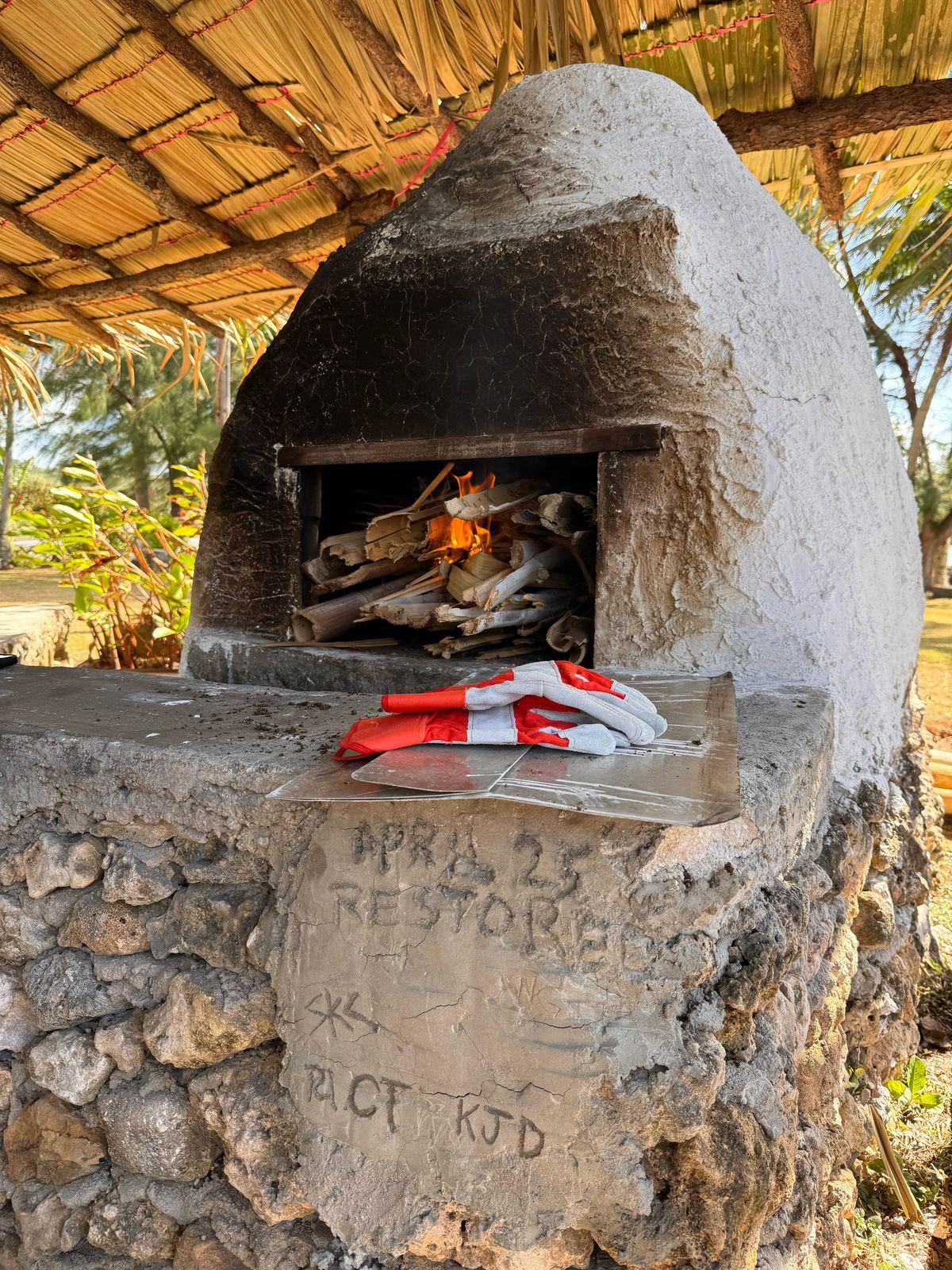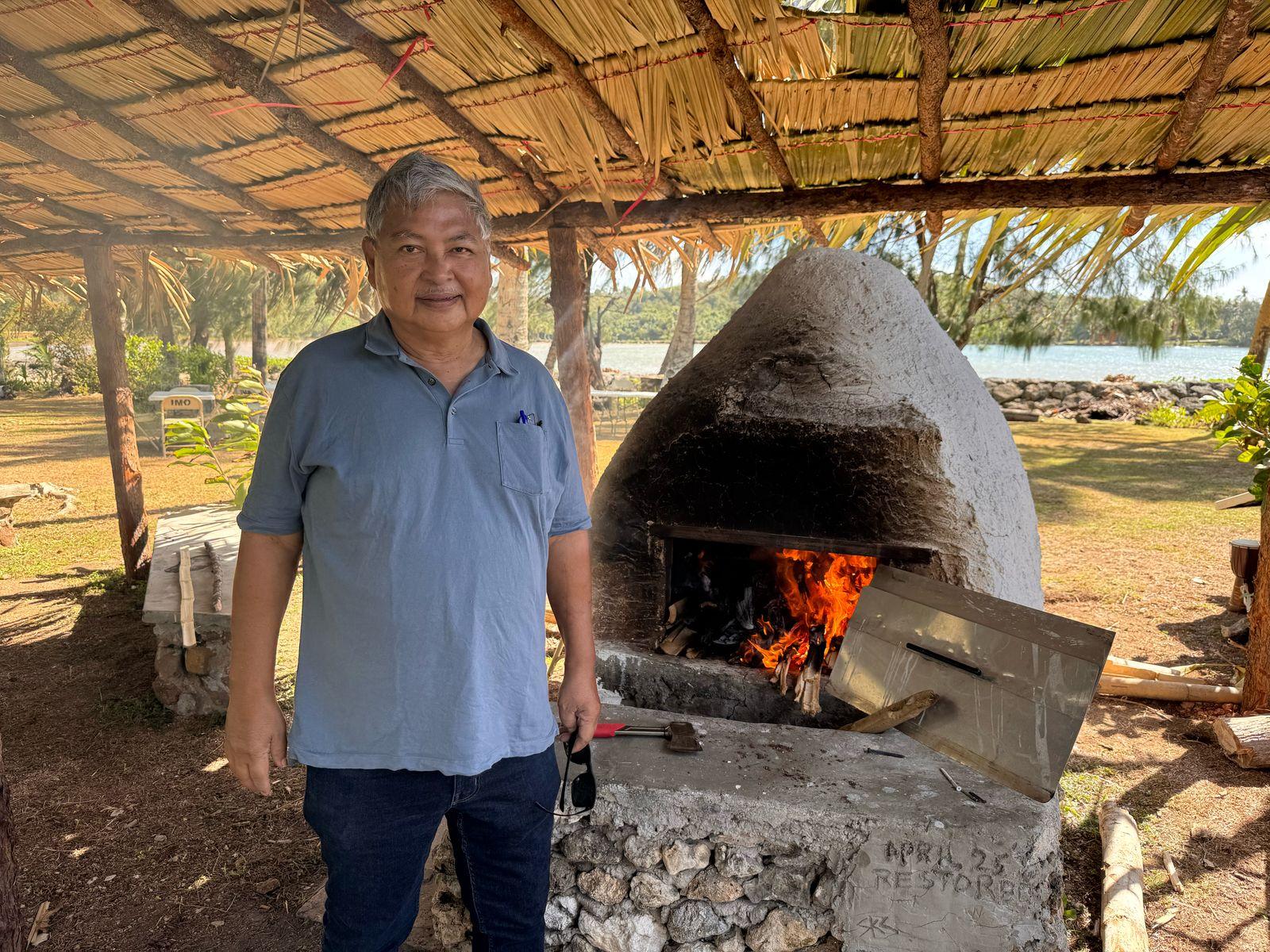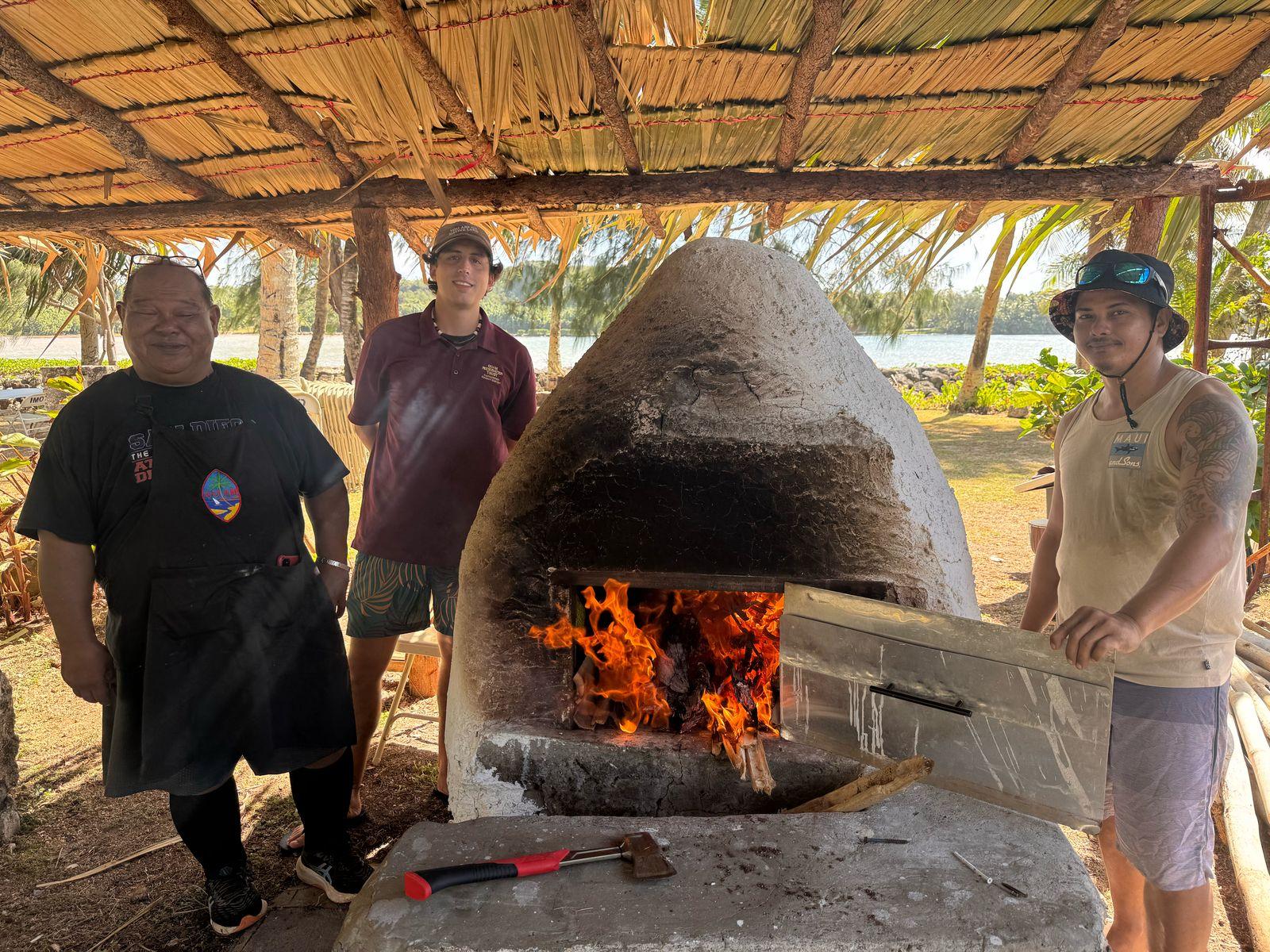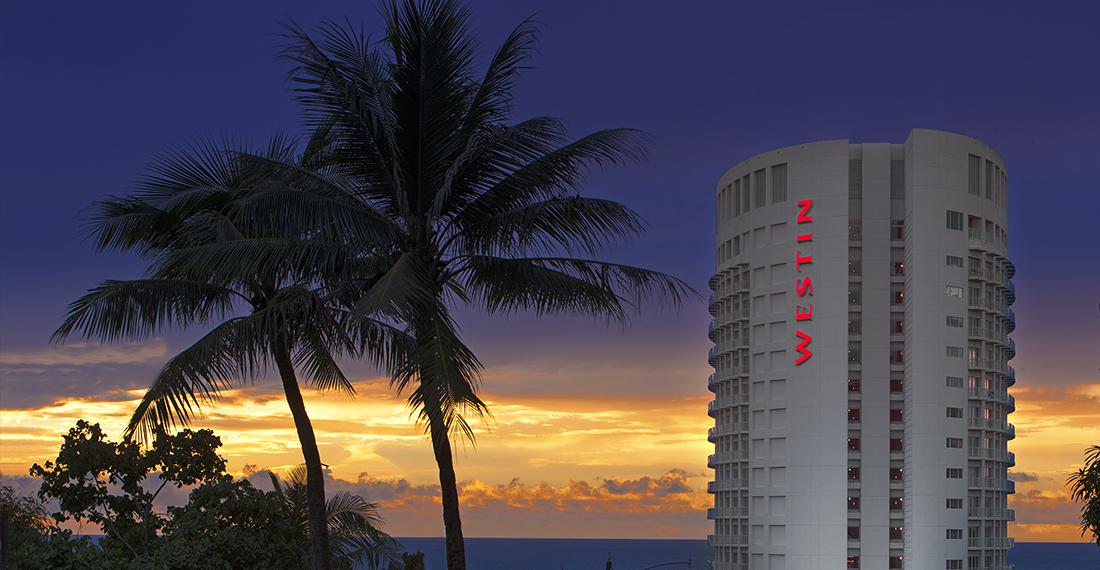
Journal Staff
A historic outdoor oven in Inalåhan, known as a hotnu, was brought back to life as part of a cultural preservation effort. The project aimed to revitalize traditional CHamoru practices and engage the community through hands-on education.
Led by cultural preservationist and baker Tony Mantanona, the hotnu restoration became more than just a repair—it was a revival of memory, heritage, and community.
The project was part of a three-part workshop series held on April 13, 27, and May 4, with support from the Guam Preservation Trust and sponsorship from the Guam Preservation Education Foundation, First Hawaiian Bank, Capital Kitchen, and Bank Pacific.
The hotnu holds special meaning for Mantanona, who revived the tradition at Sagan Kotturan CHamoru, Guam's cultural center in Tumon. There, Sunday workshops were held to teach cultural baking practices. “I’ve been doing that since 2022," Mantanona said.
Those workshops became a space for learning. “This hotnu actually was introduced to us during the Spanish era, but it was actually Mexican influence,” he said.
The restoration effort also stirred deep personal connections. Mantanona recalled a visit from a retired administrator from Yigo, who once used the hotnu to bake and sell goods to pay her college tuition. “She started tearing up… and she goes, ‘This is what put me through college,’” he said.
These workshops allowed participants to learn nipa (coconut tree) thatching. “People were just coming down from all walks of life… wanting to come down and learn how to sew the nipa,” Mantanona said.
The Hotnu Bakery began as an apprenticeship program through a CAHA Lender Grant and grew into a small business. “Dr. Judy Flores owned it for about two years, and then the object of intent was to give it to me and to just go ahead and continue with the bakery,” Mantanona said. But it later closed due to building issues and the COVID-19 pandemic.
Still, Mantanona has continued the tradition through workshops, mentoring others like Rafael Unpingco, Curt Duenas, Chris Teodoro, and Dustin Babauta. “They just come down just to learn the culture. And I don’t just teach them how to bake. I also teach them the different dishes that I’ve learned as I grew up,” he said.
Though many materials are donated, Mantanona said volunteers often cover costs themselves. “You know, we wouldn’t be doing this if we didn’t love to.”
Years of exposure had left the oven and its protective hut in disrepair, requiring extensive reconstruction. One of the volunteers, Chris Teodoro, said, “We had to actually do more than repair it. We had to rebuild most of it.”
Participants in the workshop learned every stage of oven building—lining the exterior, mixing plaster, applying brick and mortar, and managing high oven temperatures. Teodoro said the heat level is judged by the color of the bricks. “The whole brick turns white… not just the surface,” he said.
The oven’s layered design helps retain heat.
With demand growing, Mantanona said he plans to hold monthly baking days and invite vendors to join. “It’s just about a weekend thing to do once a month, which is what I used to do when I had the Hotnu Bakery,” he said.
“But the whole point was to bring the hotnu bakery back to where it all began,” he said. “I’m glad the Guam Preservation Trust saw the value in revitalizing it here in Inalåhan—they really understood how important it was.”

Quinata said the rehabilitation project was designed to teach people how to replicate the process at home. “We wanted to use this rehabilitation… as an educational event for people to learn how to build a hotnu so that they can go home and build their own,” Quinata said.
"The workshops are part of a broader vision to bring cultural practices back to life," he said. The vision includes future workshops on salt-making, coconut oil, and coconut candy. “Mayor (of Inalåhan) Tony Chargualaf wants to do a salt-making hut… So that will be the next workshop,” he said. “This is what you call a true Guam experience. You can never go wrong.”
Looking ahead, Quinata said the Guam Preservation Trust is also working on the rehabilitation of the Francis B. Q. Sanchez Elementary School. “We are hoping for the legislature to give us funding for phase two… you’re going to have a perfect and a true community center,” he said, describing plans that include housing for seniors, a museum, a mayor’s office, and space for education. “Education is not just schools,” Quinata said. “Education is community interaction... sharing your culture, and values." mbj



















